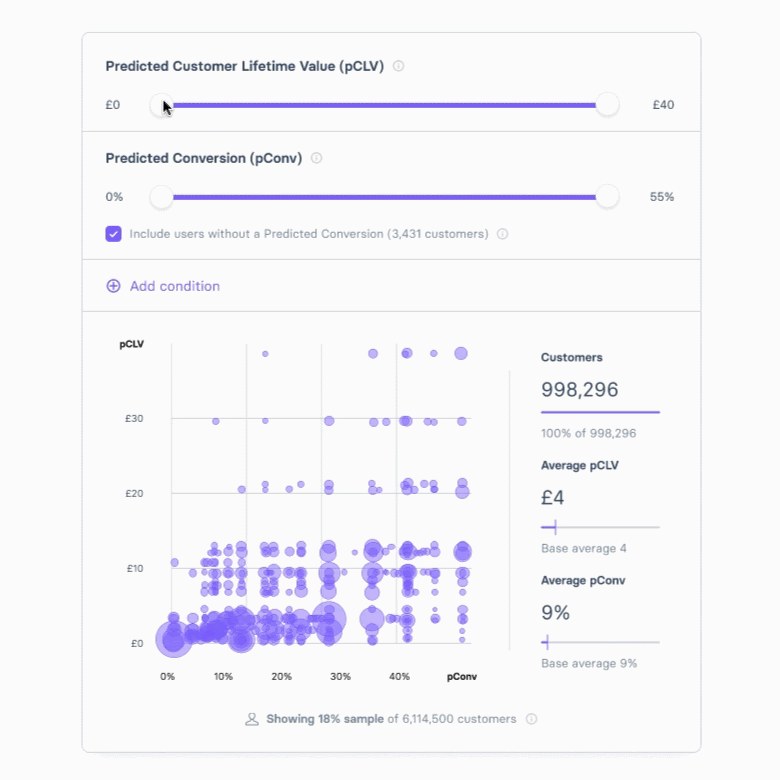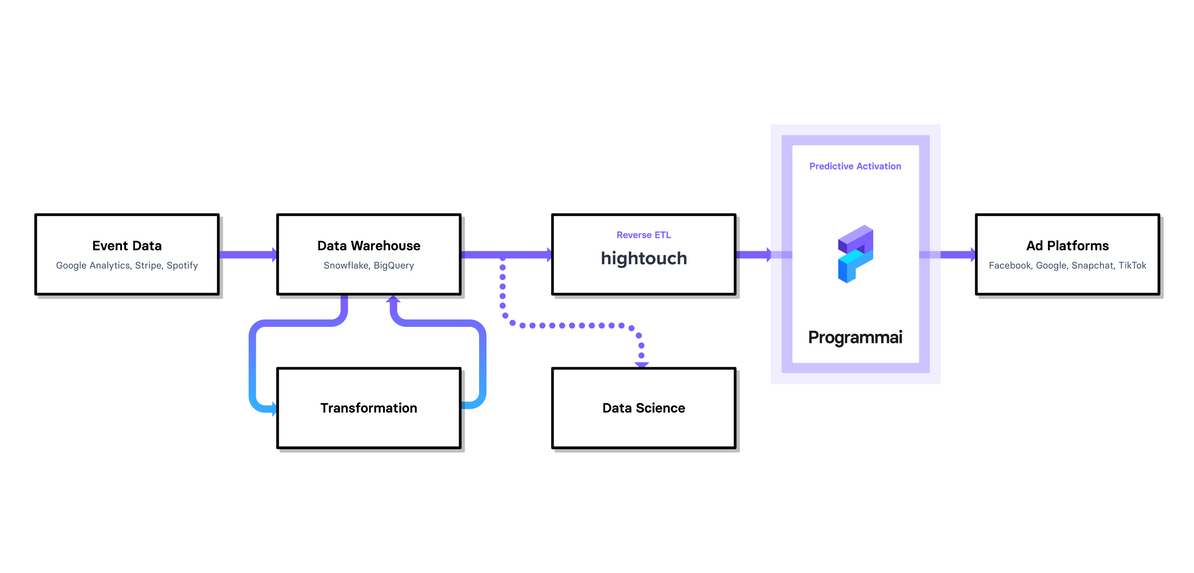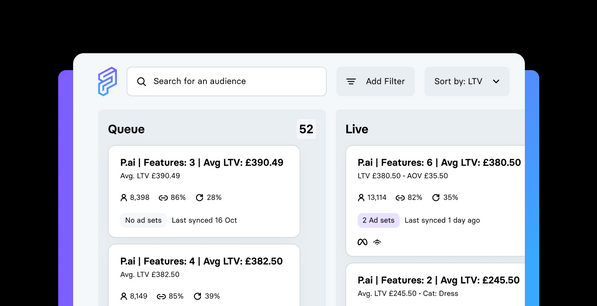Most companies don’t feel like they have a single source of truth for customer data that they can act on. They often don’t feel like they have a single source of truth for customer data at all.
Dean: You were hired at 16. You led a team at 19 and were one of the first ten engineers at Segment.
You’ve now founded Hightouch, a SaaS startup that helps companies get their customer data out of their cloud data warehouse and into their SaaS tools like CRMs, ESPs and ad platforms. Tell me the story behind you and Hightouch.
Tejas: I finished high school at 16 and joined Segment. I actually thought I’d stay for a year before heading to college!
Then Segment and the CDP space began to blow up. I stayed for four years, deferred on college twice then decided to do my own thing. Eventually that thing turned into Hightouch.
Even at Segment, I saw that everything was moving towards cloud data warehousing (CDW). Snowflake and Looker were on the rise, and solutions like self-serve analytics completely changed our approach to data.
Ten years ago, people would be hired to run SQL queries and wait hours to get the results. Now, companies have been making massive investments into their data teams and tech stacks across data science, engineering and analysis.
With the rise of cloud data warehousing like Snowflake and a great ecosystem like Fivetran and dbt, I saw the opportunity to turn the warehouse into the single source of truth of customer data across all systems. That’s why we founded Hightouch.
Dean: If we go back a step, in your own words, what are Customer Data Platforms (CDPs) and, why do I need one?
Tejas: A customer data platform (CDP) is an all-in-one marketing and data platform that helps companies collect, centralise, transform and activate their data.
Every CDP has some way to ingest data. Usually, data comes in via an API designed to track traits about users and events from your applications. Most CDPs can also consolidate and clean your data, then send it to your downstream marketing platforms like Salesforce, Google Ads or audience builders.
Most companies don’t feel like they have a single source of truth for customer data that marketing can act upon. They often don’t feel like they have a single source of truth for customer data at all.
They’ll usually fix this by centralising their data in a CDW before a CDP is even considered. You can build activation and audience building directly on top of your data warehouse, without sacrificing user experience or accessibility for the marketer.
Even though most people see a data warehouse as a black box, it’s technically possible to build your CDP audience builder directly on top. It helps mesh together your marketing and data teams.
Marketing teams want to activate their data models. If they use data from the warehouse, they can collect data from the same place that the data team is working on curating and collecting. No bottlenecks.
Dean: Why should marketers take control of the relationship with their customer, as opposed to outsourcing it to a CDP? What are the limitations and restrictions?
Tejas: Customer data is your biggest asset to differentiate in a competitive market. How can you build a better customer experience? It’s by understanding your customer data and using it to make more strategic decisions. Executing better than anyone else.
If your CDP limits what customer data you can access and how you can access it, you’re limited in what you can do. If it’s an all-in-one solution that does both marketing and data, it’s not best-in-class and doesn’t benefit from the wider data ecosystem.
If your data team is using best-in-class tools built on top of the data lake or data warehouse to run predictive models or audience building, in the CDP you’ll be restricted to whatever the CDP is using under the hood.
That being said – it’s not clear cut. In some ways, you have less control over your data with a CDW as a marketer since you have to loop in your data team. However, CDWs allow marketing to maximise all the effort that goes into your data from your data teams.
Dean: Say more. Can you give us an example…
Tejas: Okay. In a B2C context, here’s a good example.
If I’m a marketer at Amazon, let’s say I want to query what items a user currently has in their Subscribe and Save.
That query is really hard to do in an event-based system. You’d have to look at what people are adding to their basket versus removing. You might also want to know how many months they had subscribed to that item, and how that compared to the inventory information.
This inventory information might not live inside your CDP. It might only have objects for users and accounts. If you want to build an audience that considers the stock of an item at any given time when targeting ads, that’s really tough to do with a CDP.
If you’re using a CDW, you’re not limited to such a rigid data model. It’s built to handle more complex relationships between data models and objects.
Hightouch isn’t just an alternative to a CDP. It helps you move customer data from the warehouse through a new process that we’re calling reverse ETL.
ETL takes data from sources and puts it into a data warehouse. Reverse ETL takes data from the warehouse and puts it back in the source systems, where your marketing and data teams live.
This is usually raw data – but it can include predictions that Programmai makes, like Predicted Customer Lifetime Value, Predicted Conversion etc.
The gravity of data is pulling us towards the data warehouse.
Dean: This is a loaded question then, because I think the answer is a resounding yes! Do you see the CDWs powering CRMs (like Salesforce) and Facebook Ads with first party data?
Tejas: All the major companies are investing in data teams, initiatives and leadership, plus the tooling behind them.
Practically every company is reevaluating their data stack as we speak, and the gravity of data in the whole ecosystem is pulling us towards the data warehouse. Every company will need to rethink their data warehouse or heavily revamp. Otherwise, they’re going to be left behind.
I think Programmai will continue to see this trend in where it gets its data from. Rather than connecting to the source (CRM, etc.) you’ll get your data from the true single source of truth, the cloud data warehouse like Snowflake, BigQuery or Redshift. And Hightouch can help you.
The future of Activation is Predictive!
Another tired approach, but an essential one with the demise of pixel-based targeting options in the Ad Platforms, is to activate first party data (e.g. CRM segments) to build audiences.
But the future brings about an inspired approach, which you can get a piece of by leveraging Programmai. Rather than just moving your first party data from A to B, Programmai makes your data intelligent in transit — we call this Predictive Activation. And it enables you to build Predictive Audiences within any Ad Platform for any desired outcome.
Programmai is the only solution that invests in the future of a user to drive real bottom-line results. And it’s completely cookieless, future proofing you in the post cookie era.
- Build and manage predictive audiences to hit any marketing objective.
- Only reward good behaviour. Build up to 20% lookalikes around positive first party signals.
- Report on real world results with confidence. No gaming metrics.

We had struggled to find new customers from prospecting for a long time, but Programmai changed all that in a matter of weeks. The product does its thing in the background and allows us to convert new customers everyday, in a profitable way.





